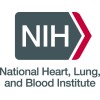
Human Atherosclerotic Plaque Inflammation Imaged Using PDG-PET/CT
Insulin ResistanceAtherosclerosis3 morePeople with diabetes are at increased risk for atherosclerosis and have high CVD morbidity and mortality rates. Tools for detecting and quantifying atherosclerotic pro/regression in people with diabetes and other CVD risk factors lack sensitivity and specificity for molecular level events that occur during the early stages of atherogenesis. Inflammatory macrophage infiltration in the vessel endothelium is an early, molecular level proatherogenic event. Activated macrophages consume glucose at a high rate. Novel in vivo radiotracer PET/CT techniques have been developed to detect, image and quantify molecular level events like macrophage inflammation and glucose utilization (18FDG) in human vessels. We propose to develop and test this novel technique in the Center for Clinical Imaging Research (CCIR) at WUMS. We propose that HIV-infected people with significant CVD risk profiles are a suitable, unique human model for testing these novel imaging techniques. HIV-infected people taking anti-HIV medications develop insulin resistance, T2DM, dyslipidemia, central adiposity, and hypertension. HIV replicates in macrophages and represents a chronic proinflammatory condition. Recent data indicate that HIV+ CVD risk have greater risk for atherosclerosis and MI than HIV-negative people. To test feasibility, we hypothesize that: a.18FDG-PET/CT imaging will detect more macrophage glucose uptake and inflammation in the carotid and aorta arteries of HIV-infected people with CVD risk than in HIV-negative controls; b. radiotracer PET/CT measures of proatherogenic processes will correlate with carotid intima media thickness; a standard measure of carotid atherosclerotic burden. We propose to obtain pilot data that shows feasibility for a novel analytical approach that will expand capabilities for researchers interested in studying the links between diabetes, inflammation, and CVD in humans.

A Multicenter Randomized Parallel-group Study to Investigate the Efficacy of a Combination of Rosuvastatin...
DiabetesCVDDiabetic patients have an excess risk of mortality due to cardiovascular diseases (CVD) compared to non-diabetics. Cardiovascular disease mortality rate is reportedly on the rise in several countries in the region, including urban China, Malaysia, Korea and Taiwan. Cardiovascular diseases and stroke are always the number 2 and 3 killers for Taiwanese population in recent years, and they really cost much from our medical resource. For treating dyslipidemia, one of the major risk factor for CVD, statins have been well documented to reduce CV deaths both for primary and secondary prevention in several large-scale trials. It has been reported that the clinical benefits of treating dyslipidemia in patients with diabetes mellitus should be at least equivalent to the benefits observed among those with cardiovascular disease. A meta-analysis of seven trials of statins found that treatment for about 5 years resulted in a 25% reduction in the combined outcome of coronary heart disease death and non-fatal myocardial infarction. Fibrates are another group of hypolipidemic drugs that regulate lipid metabolism and are used quite often in daily practice for diabetic dyslipidemia, because of its beneficial effect to reduce high TG and increase low HDL-C, which are the characteristic lipid abnormalities commonly seen in the patients with diabetes or metabolic syndrome. However, in recently published FIELD study, fenofibrate did not significantly reduce the risk of the primary outcome of coronary events in 9,795 participants with type 2 diabetes mellitus. The higher rate of starting statin therapy in patients allocated placebo might have masked a moderately larger treatment benefit. Furthermore, all the treatment trials to back up the lipid treatment guideline were conducted in Caucasians and no data about the combination therapy with fibrate and statin was published before.

Epidemiology of Carotid IMT Progression in MESA - Ancillary Study
AtherosclerosisCardiovascular Diseases3 moreTo determine the factors associated with progression of sub-clinical atherosclerosis and to evaluate the associations between the progression of sub-clinical atherosclerosis and the development of clinically manifest atherosclerosis.

Natural History of Peripheral Arterial Disease
AtherosclerosisCoronary Disease3 moreThe Veterans Administration Patient Study examined the progression of peripheral arterial disease (PAD) in patients with large vessel PAD or isolated small vessel PAD. The Community Follow-up Study following subjects with and without PAD from a previous cohort to determine subsequent coronary heart disease and cardiovascular disease morbidity and mortality.

Magnetic Resonance Angiography (MRA) for the Diagnosis of Atherosclerosis
AtherosclerosisMagnetic Resonance Angiography (MRA) is a method used to evaluate arteries and veins without the use of invasive catheters or x-rays (radiation). MRA technique has been continuously improving and has become more accurate at diagnosing problems of narrowing in blood vessels. However, MRA has a difficult time detecting narrowing in small blood vessels, limiting its use to large arteries. The purpose of this study is to recruit patients diagnosed with or suspected of having, atherosclerosis (hardening of the arteries) to participate in a series of new state-of-the-art diagnostic tests using MRA. This study is a combined effort between the National Institutes of Health (NIH), Uniformed Services University of the Health Sciences (USUHS), and General Electric Medical Services and is supported a Cooperative Research Agreement is to (CRADA). The goal of this study is to improve MRA to the point that it can reliably replace diagnostic x-ray catheter angiography in the evaluation of patients with atherosclerosis.

Potential Role of CMV in Restenosis Following Angioplasty, in Atherosclerosis, and in Endothelial...
Arterial Occlusive DiseasesAtherosclerosis2 moreThe purpose of this study is to investigate whether the susceptibility of subjects to atherosclerosis is influenced by prior CMV exposure, whether the susceptability to endothelial dysfunction in patients with and in patients without atherosclerosis is influenced by prior CMV exposure.

Pathobiological Determinants of Atherosclerosis in Youth (PDAY)
Cardiovascular DiseasesAtherosclerosis3 moreTo conduct a multicenter prevalence survey for characterizing pathologically the extent of atherosclerosis in the aortas and coronary arteries of young persons dying from accidental causes, suicide, or homicide.

DD2-Coronary Plaque Morphology and Plaque Progression
DiabetesPlaque1 moreHowever, there is only very sparse information regarding the atherosclerotic burden and cardiovascular biomarkers in the early stages of type-2 diabetes, as the vast majority of studies have concerned diabetes populations with more than 5 years average diabetes age or high-risk subgroups, who at inclusion already had atherosclerotic disease manifestations. Consequently, this study aims on evaluating the occurrence of early-stage subclinical atherosclerosis in newly diagnosed type-2 diabetes with special emphasis on coronary plaque characteristics by modern imaging techniques. These findings will be compared to the functional status of various peripheral arterial segments and biomarkers in the cross-sectional part of this study. The 5-year follow-up study intends to describe relationships between these selected measures for general atherosclerotic involvement and the progression of the coronary atherosclerotic burden by contemporary techniques.

Validation of a Computed Tomography (CT) Based Fractional Flow Reserve (FFR) Software Using the...
AtherosclerosisCoronaryCoronary Computed Tomography Angiography (CCTA) contrast opacification gradients and FFR-CT estimation can aid in the severity estimation of significant atherosclerotic lesions. Currently, FFR-CT algorithms can only be optimized using theoretical models and can only be validated in large multi-center clinical trials. Using patient specific 3D printed coronary phantoms would allow optimization of FFR-CT algorithms with a measured validation technique without the need for large clinical trials. Thus the investigators believe that this study will result in a FFR-CT algorithm/method with a better predictability for arterial lesion severity than those existing on the market today. Flow measurements will be compared with: CT-FFR for both patients and phantoms, angio lab FFR measurements and 30 days follow-up. This pilot clinical study includes ~50 patients over a year and half at GVI.

Carotid Atherosclerosis and Vascular Events in People With Diabetes
Carotid AtherosclerosisDiabetes is a risk factor for carotid atherosclerotic whose progression is associated with an increased risk of vascular events. Investigators assessed prospectively by arterial duplex ultrasonography the progression of carotid atherosclerosis in a cohort of people with diabetes to assess the importance of progression and to analyze the impact of this progression on vascular events. The main hypothesis is that people with carotid atherosclerosis progression are at higher risk of vascular events than those without any progression.
